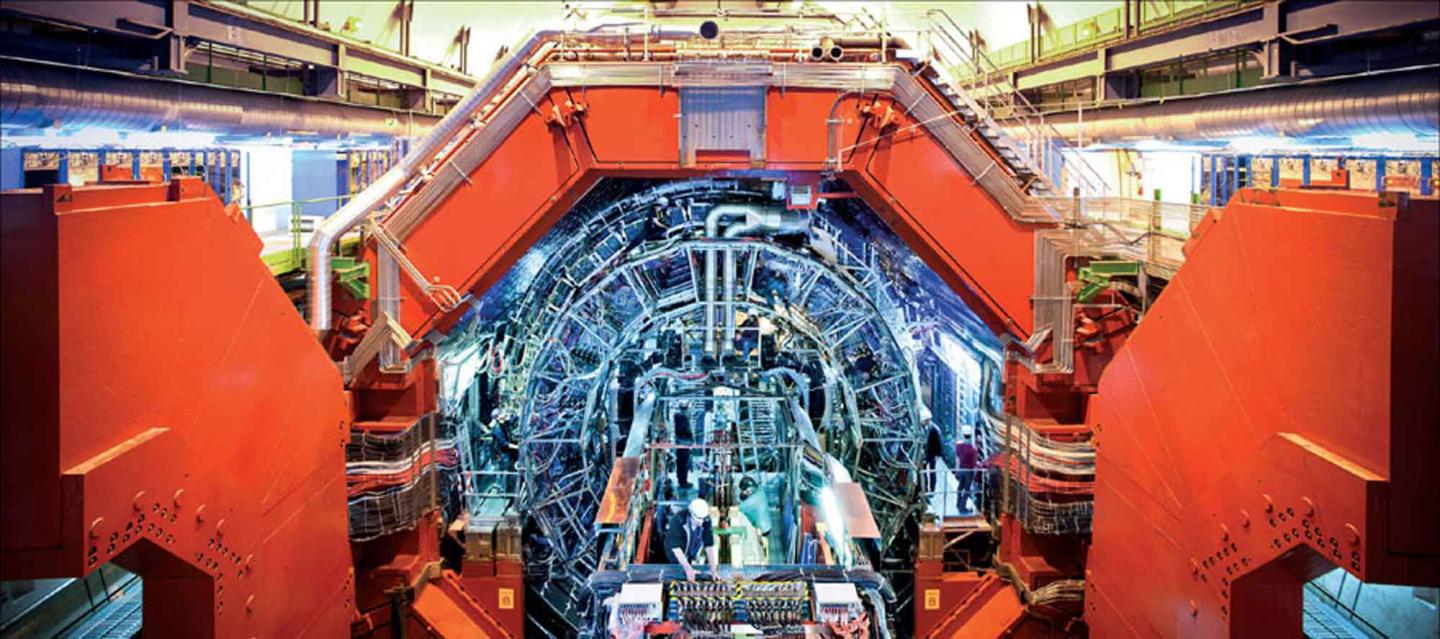After more than three years of successful operation, the ALICE detector is about to undergo a major programme of consolidation and upgrade during the long shutdown of CERN's accelerator complex. While the shutdown provides time to take stock of the wealth of data collected, the ongoing analysis, busy programme of work in the experiment's cavern at Point 2 and the planning for future upgrades will ensure that everyone in the collaboration is kept busy.
The ALICE detector is specially designed for heavy-ion collisions, which are foreseen as part of the LHC programme for four weeks a year. Data sets taken during heavy-ion periods in 2010 and 2011 as well as proton-lead data from 2013 have provided an excellent basis for an in-depth look at the physics of quark-gluon plasma.
The long shutdown will see a varied programme of consolidation work at ALICE, once hundreds of tonnes of shielding blocks have been removed to allow the large doors of the detector to be opened. A new subdetector called the dijet calorimeter (DCAL) will be installed, and all 18 of the existing ALICE subdetectors will be upgraded. There will also be major renovation work on the ALICE infrastructure, including the electrical and cooling systems.
Find out more: "ALICE looks to the future" – CERN Courier

